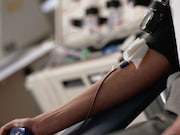Despite guidelines, placement of PICCs common in those with advanced chronic kidney disease
MONDAY, June 3, 2019 (HealthDay News) — Peripherally inserted central catheters (PICCs) are frequently used in hospitalized patients with stage 3b or greater chronic kidney disease (estimated glomerular filtration rate [eGFR], <45 mL/min/1.73 m²), according to a study published online June 4 in the Annals of Internal Medicine.
David Paje, M.D., M.P.H., from the University of Michigan Medical School in Ann Arbor, and colleagues conducted a prospective cohort study to evaluate the frequency of and characteristics associated with PICC use in hospitalized patients with stage 3b or greater CKD. Data were included for 20,545 patients who had PICCs placed.
The researchers found that 23.1 percent of the patients who had PICCs placed had an eGFR <45 mL/min/1.73 m², while 3.4 percent were receiving hemodialysis. The proportion of patients receiving PICCs with an eGFR <45 mL/min/1.73 m² was 30.9 percent in the intensive care unit (ICU) and 19.3 percent in the wards. Multilumen PICCs were placed more frequently than single-lumen PICCs among patients with an eGFR <45 mL/min/1.73 m². In wards, PICC-related complications occurred in 15.3 and 15.2 percent of patients with an eGFR <45 and ≥45 mL/min/1.73 m², respectively. In the ICU setting, the corresponding percentages were 22.4 and 23.9 percent.
“Despite guidelines that recommend against the use of PICCs in patients with CKD, we found that such practice is common in the hospital setting,” the authors write.
One author disclosed receiving personal fees from the medical publishing industry, providing expert testimony, and receiving grants from Blue Cross Blue Shield of Michigan, which partially funded the study.
Copyright © 2019 HealthDay. All rights reserved.








